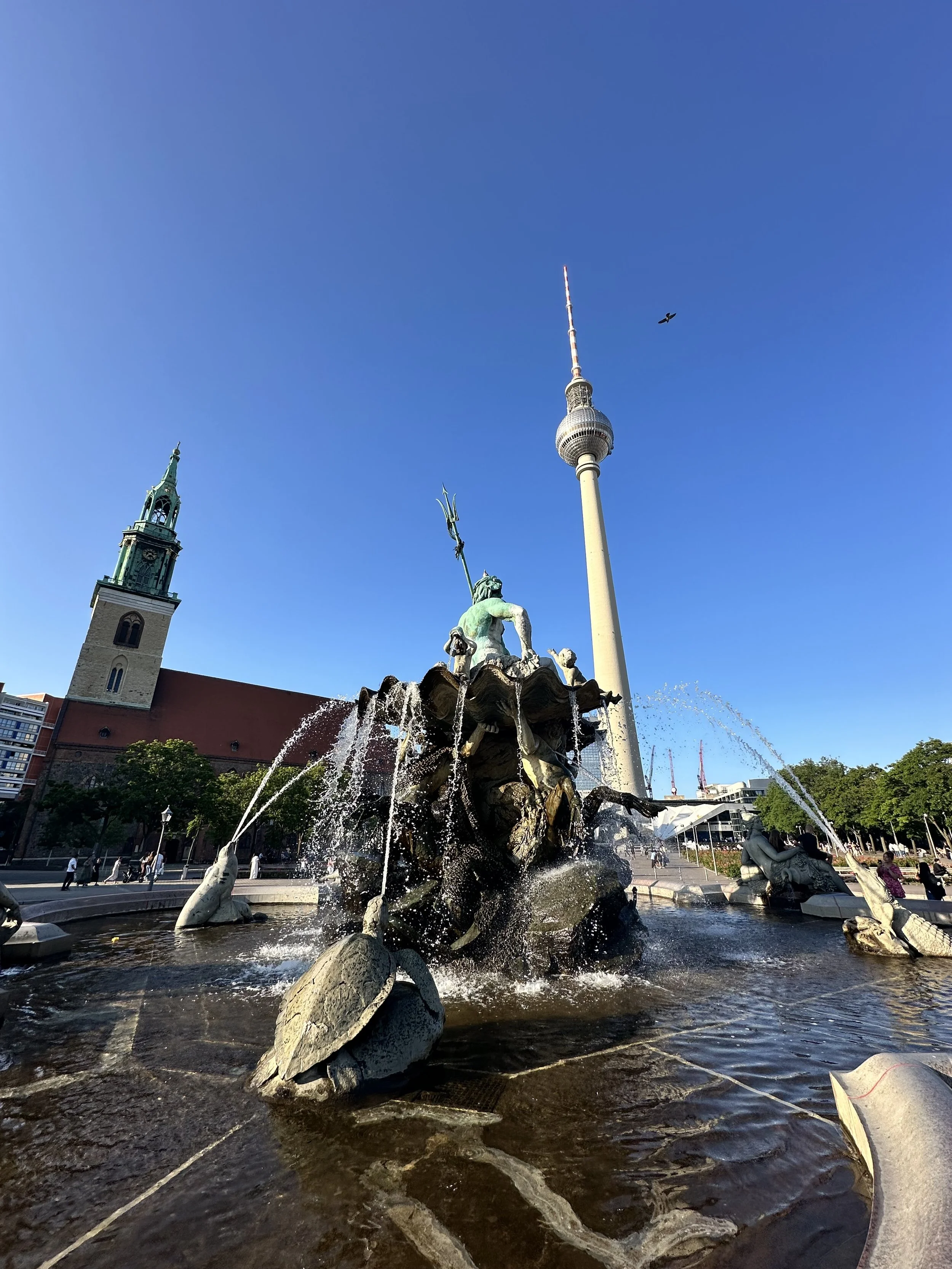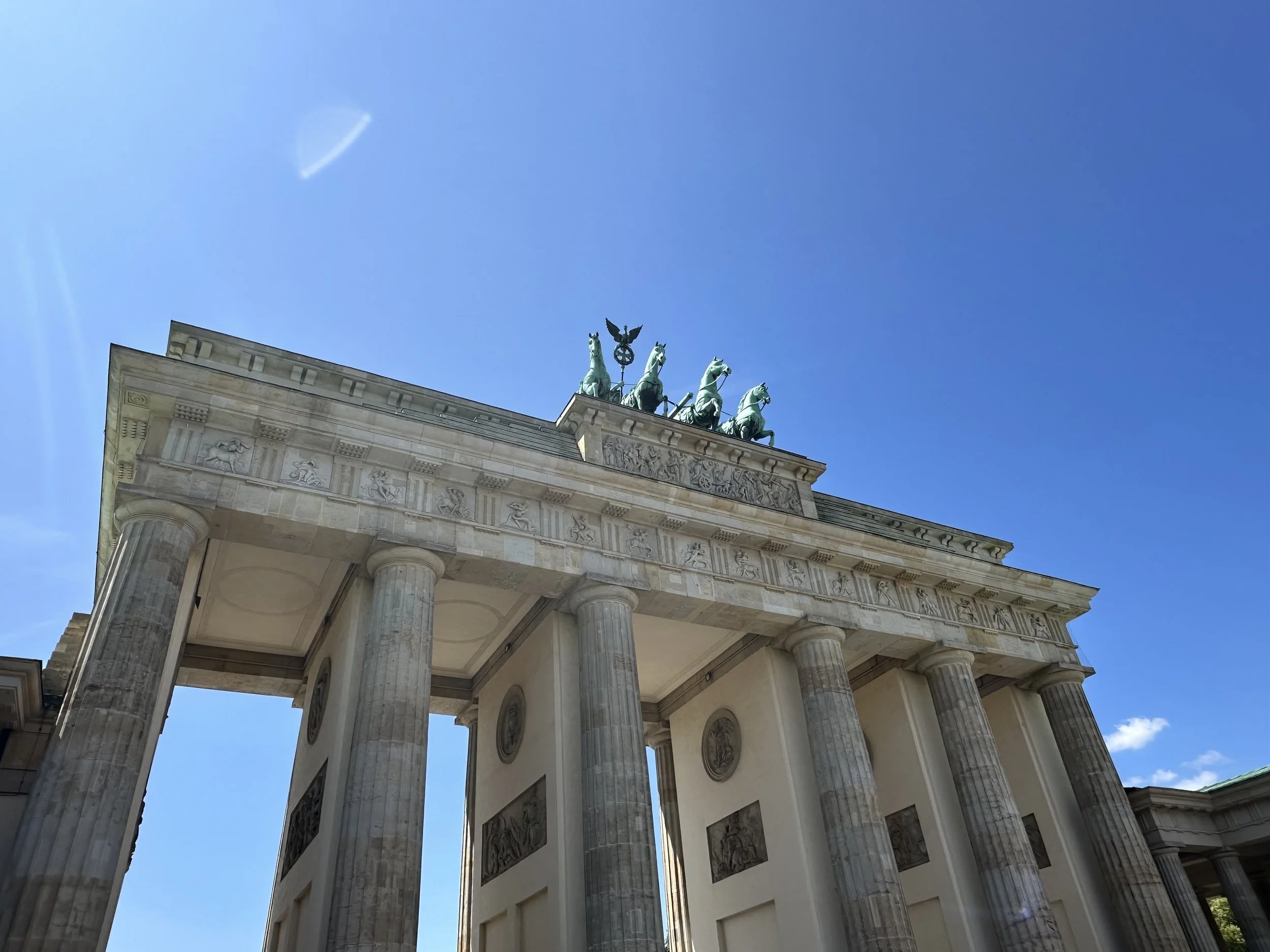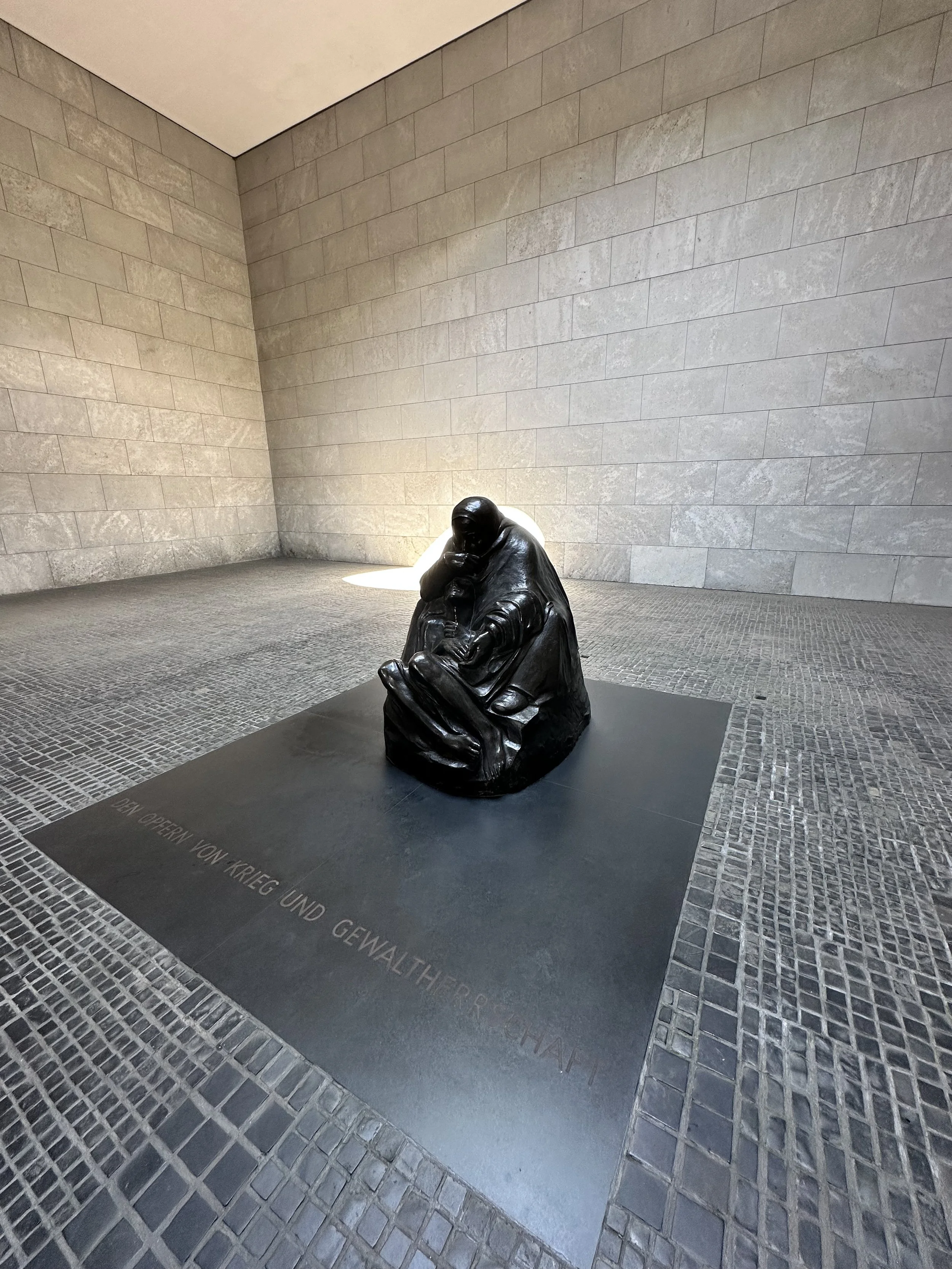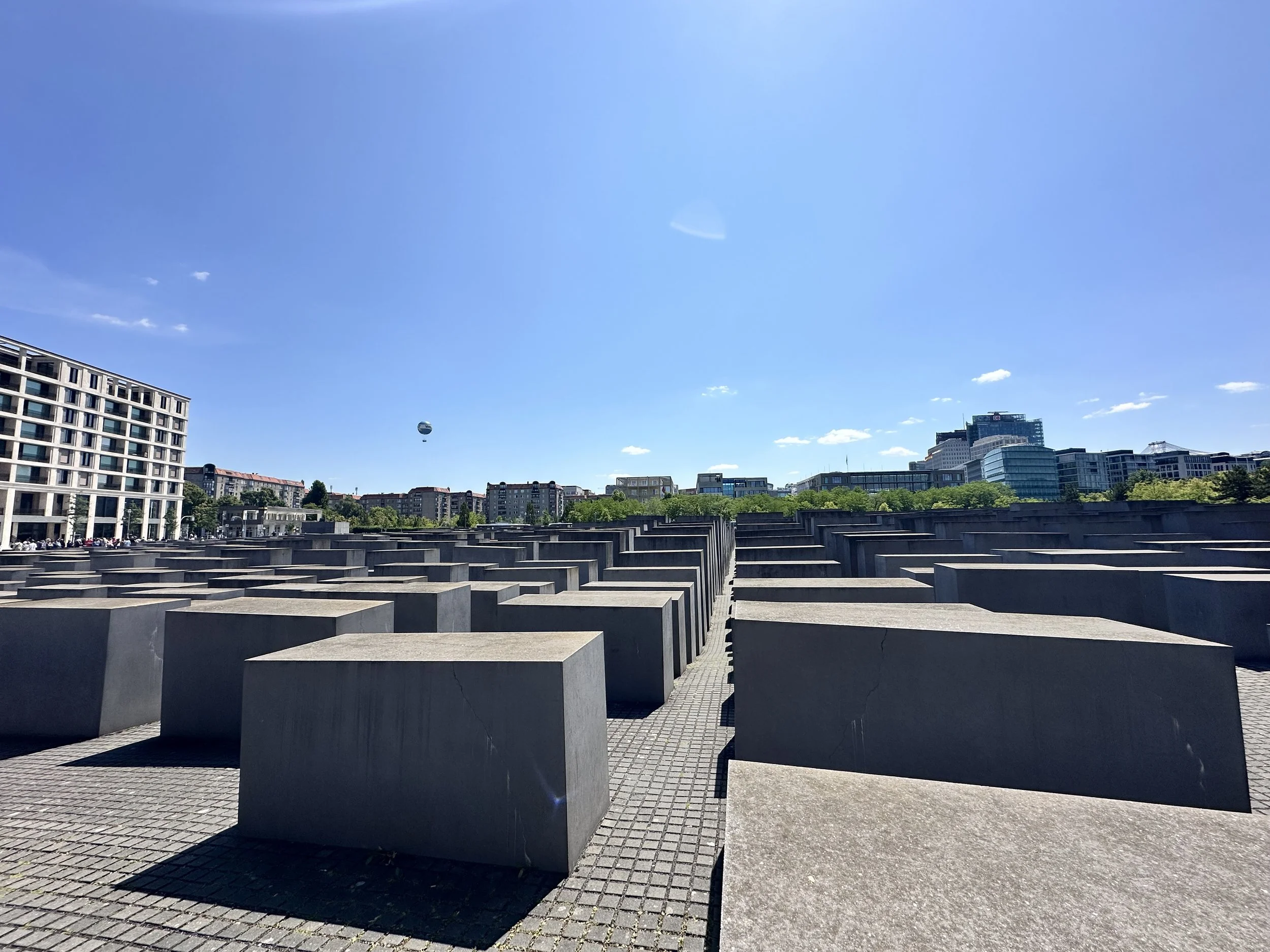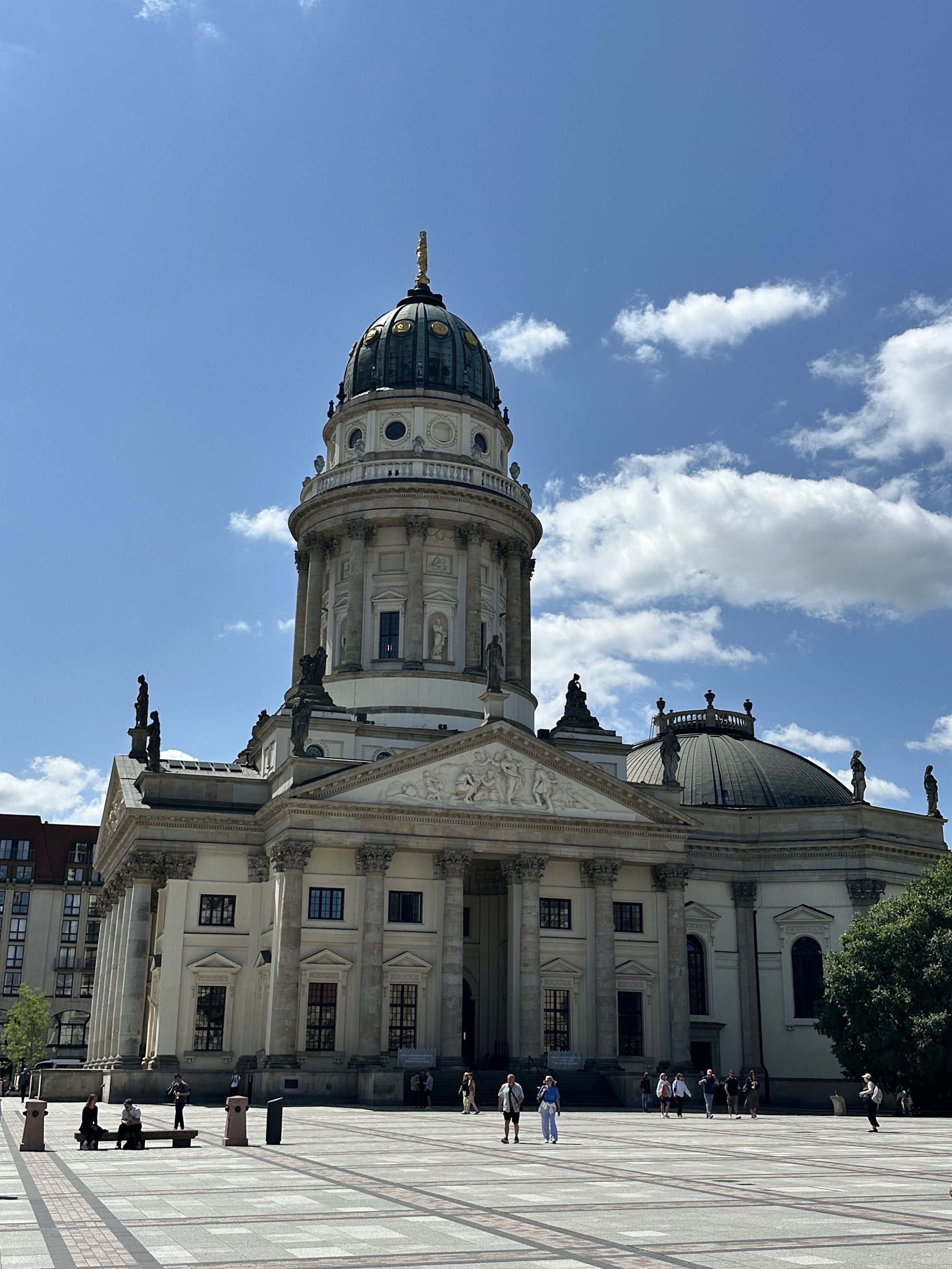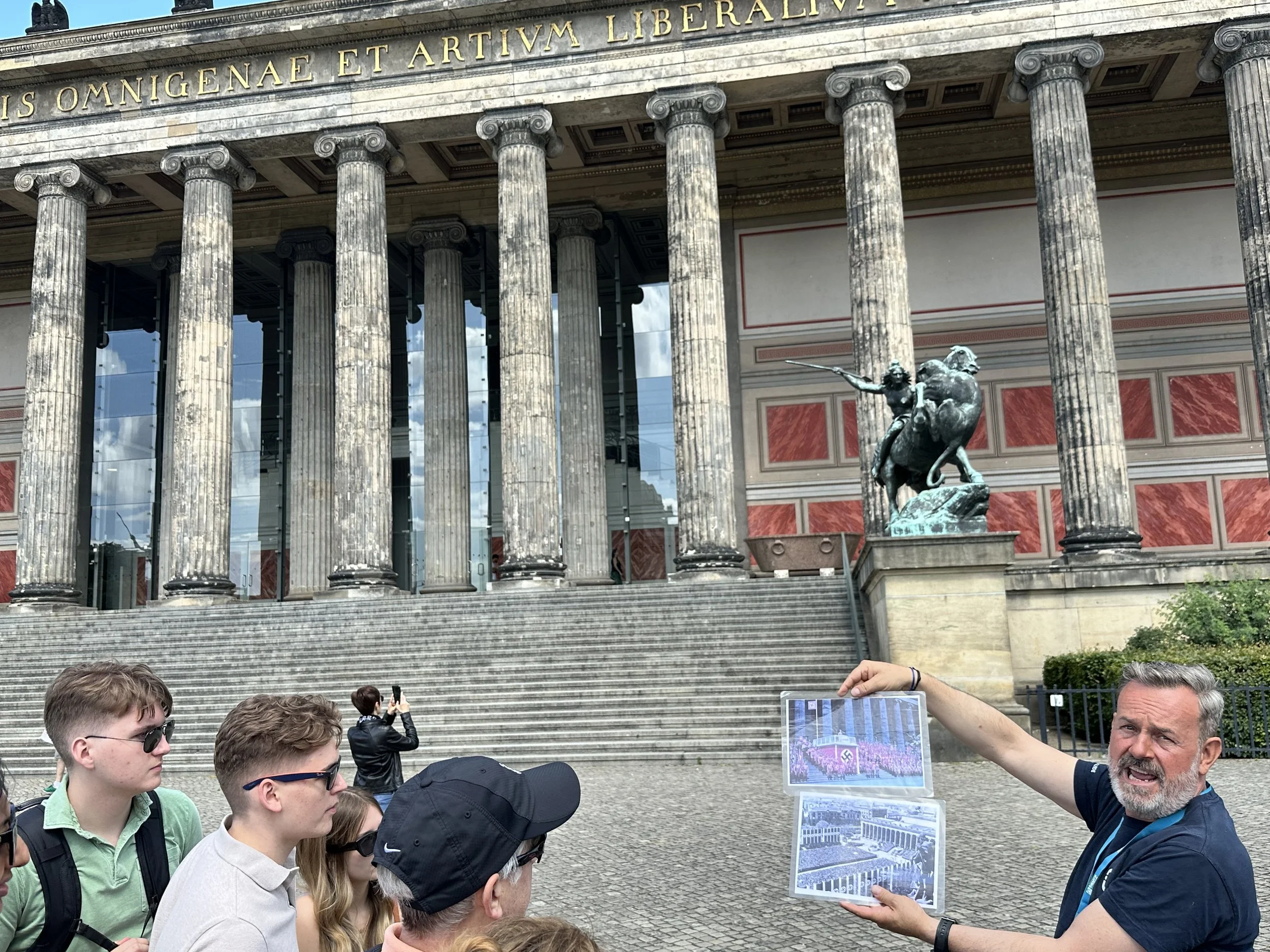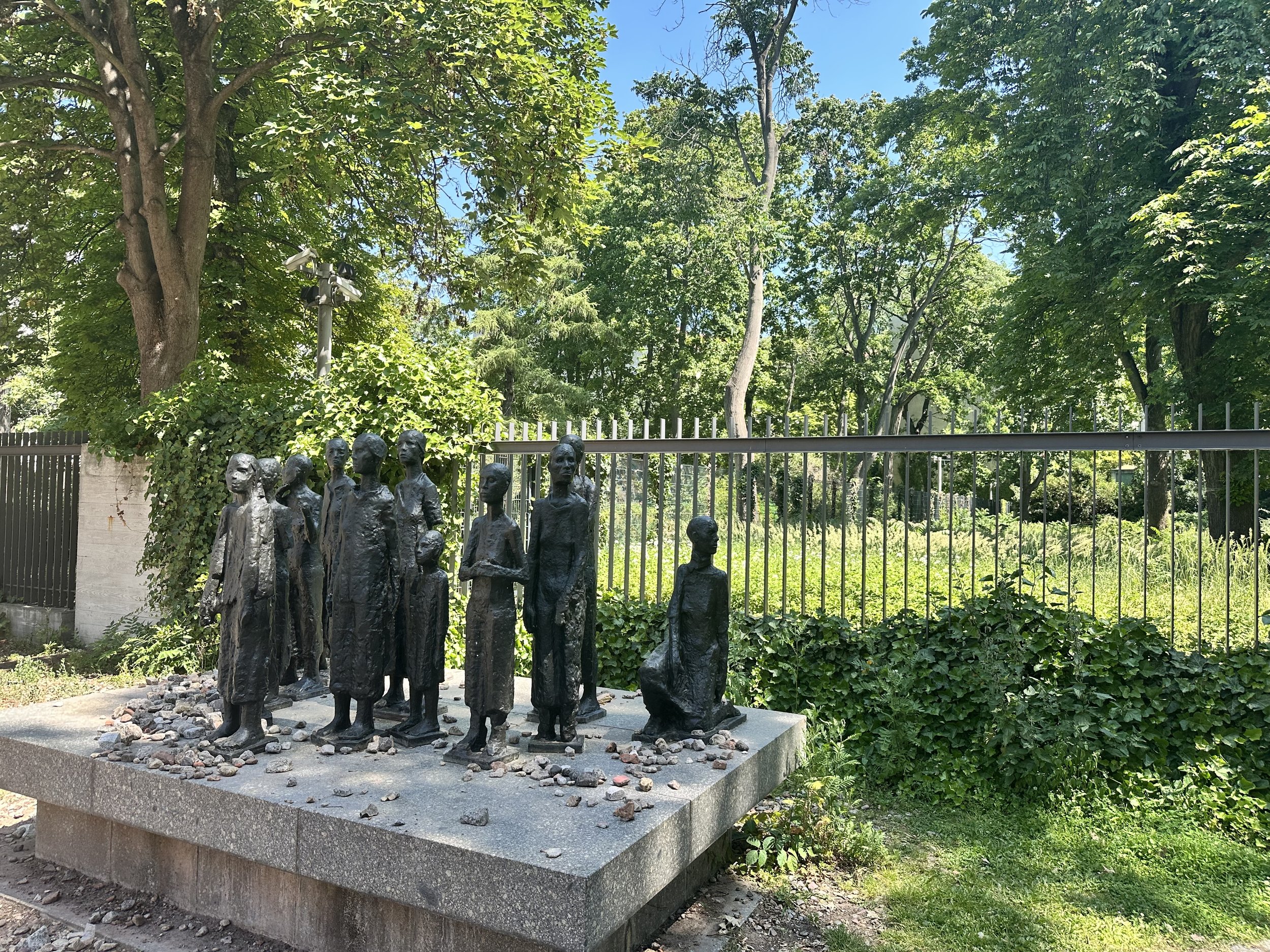Solo Summer 2025 Days 27-29: More History, More Art, and an Unexpected Music Featival
I began my time in Berlin with a four-hour walking tour, starting in the lively Hackescher Markt area. Known for its stylish courtyards, boutiques, and art galleries, it was the perfect launch point into Berlin’s eclectic character. From there, we moved through centuries of history—Prussian grandeur, Nazi horror, Cold War division—tracing Berlin’s journey through some of the most defining moments of European history.
We passed iconic sites like the Berlin Cathedral (Berliner Dom), Museum Island, the former East German government quarter, and remnants of the Berlin Wall. The tour ended at the Brandenburg Gate, a symbol of both division and unity. Standing there, with tourists buzzing and cyclists weaving by, I thought about how Berlin remains shaped by its history—but refuses to be defined by it alone.
Day 2: Confronting the Past
My second day was deeply moving. I visited the Topography of Terror, an exhibition located on the grounds of what was once the Gestapo and SS headquarters. The museum presents photographs, documents, and personal stories that illuminate the machinery of Nazi oppression. It’s not an easy visit, but it’s an essential one.
From there, I walked to the Memorial to the Murdered Jews of Europe, also known as the Holocaust Memorial. The field of 2,711 concrete slabs—rising, falling, narrowing, and widening as you move through—is hauntingly abstract, forcing you to reflect without directing your thoughts. It’s one of the most powerful memorials I’ve experienced.
That evening, I took a quieter turn, enjoying a slow dinner and a walk through the city as the light faded. Berlin somehow balances heavy history with gentle moments of calm, and I found myself appreciating both.
Day 3: Domes, Masterpieces, and Music in the Streets
I started Day 3 with a visit to the Berliner Dom, Berlin’s impressive baroque cathedral that sits at the edge of Museum Island. I climbed to the top of the dome for panoramic views of the city—a stunning way to get your bearings and appreciate Berlin’s unique blend of classical and modern architecture.
Next up was the Gemäldegalerie, home to one of the world’s finest collections of European paintings from the 13th to 18th centuries. Works by Rembrandt, Vermeer, Botticelli, and Caravaggio lined the walls. The layout was spacious and thoughtfully curated, and the museum wasn’t overly crowded, which made for a truly immersive experience. I could have spent hours lost in brushstrokes and chiaroscuro.
But perhaps the most unexpected delight of the day was stumbling into Fête de la Musique—an annual citywide music festival held every June 21st. All across Berlin, streets and plazas turned into impromptu stages. I wandered through neighborhoods where music poured out of courtyards, parks, and street corners. I heard everything from a cappella choirs and classical strings to hard rock bands and experimental DJs. Locals and tourists alike danced, swayed, clapped, and simply paused to enjoy the sounds. Berlin’s creative spirit was fully on display, and it made the city feel alive in a completely different way.
Looking Ahead
My solo time in Berlin has been equal parts sobering and inspiring. Whether diving into the depths of 20th-century history, standing under domes of gold and glass, or simply following the sound of music through the streets, I’ve felt Berlin’s undeniable pull. And with two more days to go in Berlin, I will be starting my 28-day G Adventures tour through Eastern Europe and the Balkans! Stay tuned!

